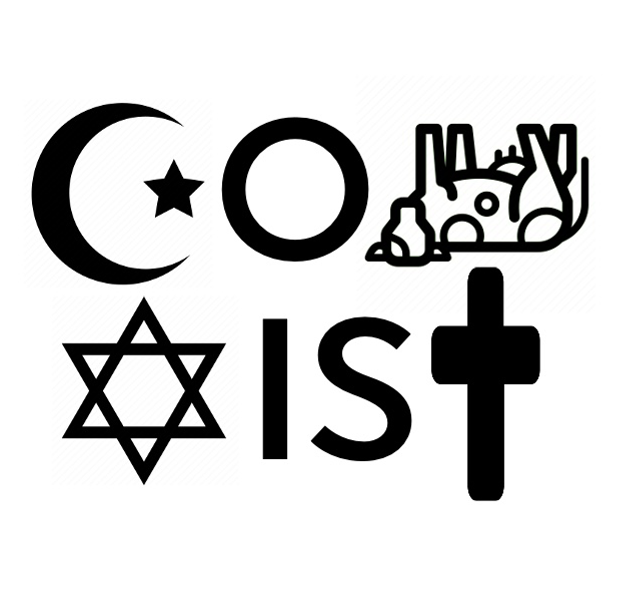By Marc J. Elzenbeck
Cattle were domesticated from wild aurochs starting about 10,500 years ago. Roughly speaking, an auroch is to a farm cow as a timber wolf is to a cocker spaniel. These were amongst the biggest, baddest land-borne mammals left over from the Pleistocene, so by “domesticated,” what they mean is “captured and trying to keep while figuring out what to do.”
Fossils show the female’s withers (shoulders) were about five feet high and wide enough to stabilize heads suitable for toppling lesser trees. The thickly muscled males were about eight feet high at skull’s apex, with two weaponized three-foot long horns thick as a bodybuilder’s biceps, which, if here today, they could idly sharpen on a basketball hoop’s rim.
Aurochs survived into the early Industrial Age, the last known full herd fading out in a Polish forest in the 1600s, but their underlying genes can on occasion be strongly expressed in present-day individuals. As they did in Leslie Lou “Minnie” Moo.
In size and temperament, our Holstein-skinned rescue cow was a monster, the fundamental reason for her rescue and adoption. While in human years still a svelte teenager, she already weighed on the northern side of 3,000 pounds, making her two or three times bigger than the average beef cow. That plus her dramatic personality precluded snuggle sessions, on-belly meditations, or athletic forms of team yoga.
Originally gifted as a birthday pet and raised on Vashon, Leslie’s first owner, shocked by her tremendous appetite, obnoxiousness, and penchant for feral havoc, preferred not to send her to slaughter. She looked for a new owner, one appreciating dairy potential.
Leslie was probably capable of producing 12 gallons of milk a day, but no one in their right mind would ever set a bucket under her udders. Even greenhorns, enthusiasts, and lunatics knew better than to try. That’s where we came in.
To recap, our spotted giantess had just been put into our pasture for foster care, where she was re-branded (just kidding!) from “Minnie” to “Leslie.” She then high-jumped a four-foot-tall fence, clearly intending to re-unite with Mr. Harm zum Spreckel’s bull, from whom she had been torn away a couple of hours earlier.
While under close human pursuit, Leslie was scared off by angry motorists and soon took a wrong turn, leaving a trail of destruction through forest undergrowth and tumbling by stages down 400 feet of high-bank cliffs to the Colvos Passage beach.
There, she was discovered when Larry the Bus Driver returned home from work. Having no particular need for a scuffed-up, mutant dairy cow, and concerned for his beach property, he contacted the search party. They converged on the scene, but in the re-rescue process, Leslie-Cowzilla ripped apart a stamped steel gate, turning her left shoulder into a 10-pound hanging flank steak.
Under normal circumstances, any bovine in her blood-drenched condition would immediately be euthanized, both out of mercy, and because it’s genuinely dangerous to be close to wounded, agile, grief-stricken, and extremely annoyed animals who weigh over a ton. But Leslie was pregnant, a technicality revealed shortly after her escape and misfortune, so the Foster Cow Welfare Committee decided to try saving her.
The first vet we called told us we were crazy, to put her down like normal ranchers, and hung up. The second vet agreed to come by. Because of the wound’s size (deep as your hand, two and a half feet long) and the cow’s skin, stitches and staples couldn’t be used. The vet laid out a bold healing plan that could, in theory, work.
It was simple, really. All we had to do was tie Leslie between two trees every morning, brush sterilizing chlorhexidine into her wound, debride it until completely clean, pat it dry with a towel, then rub in a half-tin of Bag Balm. Remember the movie “Terminator 2,” and the scene with the gallon jug of blue liquid that Linda Hamilton fills a syringe with and threatens to inject into the asylum’s psychiatrist? That’s chlorhexidine. Into the wound. Every. Morning.
A member of the Committee we’ll call Rhett Butler was a handyman who happened to have a wicked crush on Leslie’s adoptive mom, so he gallantly volunteered to be the healer. And for the next three months, he was. It gradually got easier, but let’s put it this way: A ton-and-a-half cow can perform a forward somersault, land on her back, and flail her legs in the air while roped between two trees. The things we do for love.
Rhett and his patient survived, and the wound closed so completely you could hardly tell it was ever there. Best of all, love did blossom, even more than foreseen. Due to close contact and time, Leslie forgot all about her first romance. She decided Rhett was worthy of her considerable attentions, and that he would make a great dad for her calf.

